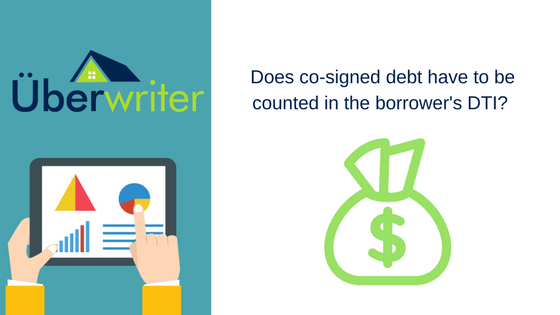The answer to this question has changed for the better as of April 25, 2017. Fannie Mae continues to improve and streamline the loan approval process with SEL 2017-04.
In the past lenders were required to take a few steps to exclude co-signed debts from the borrower. Step one was to confirm the other party was obligated on the note. Step two was to prove a twelve-month history of payment. That was the easy part. This would break down in most cases is the requirement to confirm the other party was the primary on the debt.
New Guidelines from FNMA
Here are the new requirements for debts paid by others per Fannie Mae:
We are simplifying our requirements for excluding non-mortgage debts from the debt-to-income ratio. Non-mortgage debts include debt such as installment loans, student loans, and other monthly debts as defined in the Guide. If the lender obtains documentation that a non-mortgage debt has been satisfactorily paid by another party for the past 12 months, then the debt can be excluded from the debt-to-income ratio. This policy applies regardless of whether the other party is obligated on the debt.
NOTE: This policy does not apply if the other party is an interested party to the subject transaction (such as the seller or realtor)
As you can see much, much simpler! The guide contains other major updates regarding the calculation of student loan debts. These loans seem to have increased the amount of declined loans for DTI in last few years. Bottom line, a quick and easy read, and well worth your time.
These new changes are effective immediately, so before you send out that declination letter for DTI issues to your borrower, try these new guidelines to get them approved!


2 Responses
Could you provide a specific example of the change along with what documentation a typical UW might request.
The new method is easier to document, mainly due to the new guidelines does not require evidence that the other person paying the bill is the primary borrower. With this new guideance you just need the 12 months evidence that another party (even if they are not on the note) is paying the loan.
Thanks!